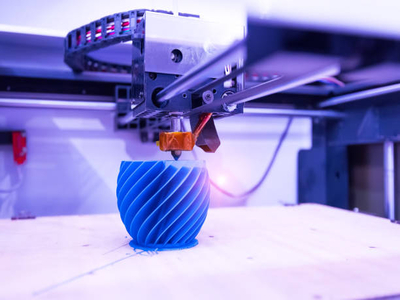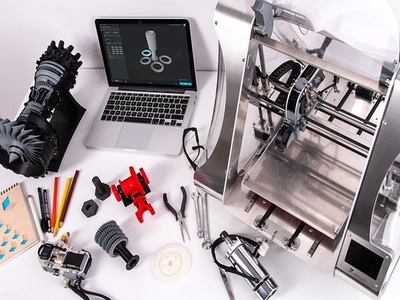Designing parts for 3D printing can be a difficult task if you don’t know where to start.
In this blog post, we’ll discuss the basics of how to design parts for 3D printing.
We will cover topics such as how to choose the right software, how to create models, and how to prepare your files for printing.
With the right knowledge, you can create beautiful and functional parts that can be printed on any 3D printer!
How To Choose The Right Software For Designing Parts

When it comes to 3D printing, the software you use is just as important as the printer itself.
With so many software options on the market, choosing the right software can be a daunting task.
Here are a few things to keep in mind as you shop around:
- First, consider the type of objects you’ll be printing. If you’re mainly interested in printing small, simple parts, then a basic program like SketchUp will likely suffice.
On the other hand, if you’re looking to print more complex objects, you’ll need a more powerful program like SolidWorks. - Second, think about your budget. Some programs can be quite expensive, so it’s important to find one that fits within your budget.
However, keep in mind that cheaper programs may not have all the features you need. - Finally, take some time to read reviews from other users. This can be a great way to get an idea of which programs are easy to use and which ones have potential problems.
With a little research, you should be able to find the perfect software for your 3D printing needs.
How To Create Models That Are Printable On Any Type Of Printer
There are several key considerations to keep in mind when creating models for 3D printing.
Firstly, it’s important to consider the material that you’ll be using for your prints.
Different materials and printers require different levels of detail and resolution, so having a good understanding of what type of printer you’ll be using is crucial.
Another important factor is the complexity of the shape of your model.
Generally speaking, any model that requires too much support or significant structural reinforcement should not be printed on an open-source, consumer printer.
However, there may be some exceptions depending on the quality of your slicer software.
For this reason, it’s always recommended to run a test print with your model first before committing to a full-sized print job.
Finally, it’s also important to think about the overall size of your model and how well it can be scaled for different printers.
If possible, try to design your models around multiples of something like 16x16x16 cm cubes or 5mm grids so that they can easily be resized later on if needed.
Following these simple guidelines will help to ensure that all of your prints are perfect every time.
Read our related article where we test and review the BEST 3D Printers Under $500! These more affordable options are stil great quality – and here’s why we love them!
How To Prepare Your Files For Printing

First and foremost, it’s important to have a well-designed file that’s ready for printing. This means that all the dimensions are correct and the file is properly formatted.
If your file isn’t correctly formatted, it could result in a poor-quality print or even damage to your printer.
Once you have a correctly formatted file, you’ll need to choose the right material for your project.
There are a variety of materials that can be used for 3D printing, each with its own advantages and disadvantages.
But you’ll need to decide which material is best suited for your project before you begin printing.
Finally, you’ll need to set up your printer according to the instructions provided by the manufacturer.
This includes choosing the correct settings and calibrating the printer. Once everything is set up, you’re ready to begin printing your 3D project!
Tips And Tricks For Troubleshooting Common Design Problems

3D printing is an exciting and relatively new technology that allows designers to create three-dimensional objects from digital models.
However, the process is not without its challenges, and designers often encounter problems when printing their designs.
This can be frustrating, but there are a few ways to troubleshoot common 3D printing problems.
One of the most common issues is referred to as “stringing.”
This occurs when small strands of plastic are left behind as the print head moves from one point to another.
Stringing can be caused by a variety of factors, including incorrect nozzle temperature, poor filament quality, or excessive retraction.
The best way to combat stringing is to experiment with different settings until you find a combination that works for your particular printer and filament.
Another common problem is known as “warping.” This occurs when the corners of a print begin to curl up or distort.
Warping is often caused by uneven cooling, which can be remedied by using a brim or raft to increase the surface area in contact with the build plate.
In some cases, it may also be necessary to increase the build plate temperature.
Read More: What is Retraction in Terms of 3D Printing? If you’re new to 3D printing and its terms, check out this article on retraction!
how to design parts for post-processing
When designing parts for post-processing in 3D printing, there are a few key considerations that you should keep in mind:
- First, make sure that the design can accommodate tolerances and potential imperfections that may arise during the printing process.
This includes accounting for some warping or flexing as well as small variations in color and shape. - Consider how parts will interact with each other when assembling a larger project, including how they will fit together and how they will be secured once they are put in place.
- Another important factor to consider is how your finished project will need to be handled and transported, which can help inform how complex your part designs need to be.
Whether you’re just getting started with 3D printing or are looking for tips on how to improve your designs, these guidelines can help ensure that your post-processing process runs smoothly from start to finish.
Conclusion
Designing parts for three-dimensional printing can be a challenge, but following these tips can help ensure that your prints are of the highest quality.
With a little practice, you’ll be able to create beautiful, intricate designs that are perfect for any project.
Thanks for reading!
Read More